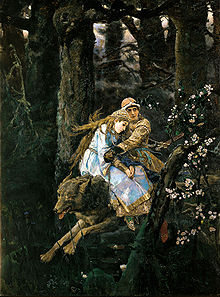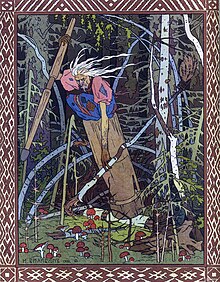
A fairy tale is a short story that belongs to the folklore genre. Such stories typically feature magic, enchantments, and mythical or fanciful beings. In most cultures, there is no clear line separating myth from folk or fairy tale; all these together form the literature of preliterate societies. Fairy tales may be distinguished from other folk narratives such as legends and explicit moral tales, including beast fables.

"Cinderella", or "The Little Glass Slipper", is a folk tale with thousands of variants throughout the world. The protagonist is a young woman living in forsaken circumstances that are suddenly changed to remarkable fortune, with her ascension to the throne via marriage. The story of Rhodopis, recounted by the Greek geographer Strabo sometime between around 7 BC and AD 23, about a Greek slave girl who marries the king of Egypt, is usually considered to be the earliest known variant of the Cinderella story.
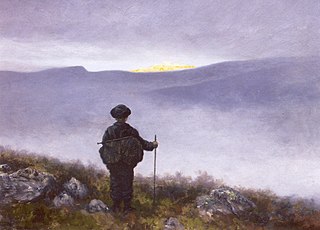
A quest is a journey toward a specific mission or a goal. The word serves as a plot device in mythology and fiction: a difficult journey towards a goal, often symbolic or allegorical. Tales of quests figure prominently in the folklore of every nation and ethnic culture. In literature, the object of a quest requires great exertion on the part of the hero, who must overcome many obstacles, typically including much travel. The aspect of travel allows the storyteller to showcase exotic locations and cultures. The object of a quest may also have supernatural properties, often leading the protagonist into other worlds and dimensions. The moral of a quest tale often centers on the changed character of the hero.

Sleeping Beauty, also titled in English as The Sleeping Beauty in the Woods, is a fairy tale about a princess cursed by an evil fairy to sleep for a hundred years before being awoken by a handsome prince. A good fairy, knowing the princess would be frightened if alone when she wakes, uses her wand to put every living person and animal in the palace and forest asleep, to waken when the princess does.
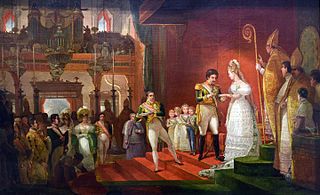
A stepmother, stepmum or stepmom is a non-biological female parent married to one's preexisting parent.

In mythology, folklore and speculative fiction, shape-shifting is the ability to physically transform oneself through an inherently superhuman ability, divine intervention, demonic manipulation, sorcery, spells or having inherited the ability. The idea of shape-shifting is in the oldest forms of totemism and shamanism, as well as the oldest existent literature and epic poems such as the Epic of Gilgamesh and the Iliad. The concept remains a common literary device in modern fantasy, children's literature and popular culture.

"Bluebeard" is a French folktale, the most famous surviving version of which was written by Charles Perrault and first published by Barbin in Paris in 1697 in Histoires ou contes du temps passé. The tale tells the story of a wealthy man in the habit of murdering his wives and the attempts of the present one to avoid the fate of her predecessors. "The White Dove", "The Robber Bridegroom" and "Fitcher's Bird" are tales similar to "Bluebeard". The notoriety of the tale is such that Merriam-Webster gives the word "Bluebeard" the definition of "a man who marries and kills one wife after another". The verb "bluebearding" has even appeared as a way to describe the crime of either killing a series of women, or seducing and abandoning a series of women.
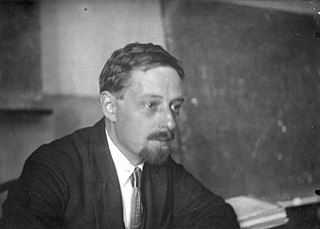
Vladimir Yakovlevich Propp was a Soviet folklorist and scholar who analysed the basic structural elements of Russian folk tales to identify their simplest irreducible structural units.

In fairy tales, a fairy godmother is a fairy with magical powers who acts as a mentor or parent to someone, in the role that an actual godparent was expected to play in many societies. In Perrault's Cinderella, he concludes the tale with the moral that no personal advantages will suffice without proper connections.

Prince Charming is a fairy tale stock character who comes to the rescue of a damsel in distress and must engage in a quest to liberate her from an evil spell. This classification suits most heroes of a number of traditional folk tales, including "Snow White", "Sleeping Beauty", and "Cinderella", even if in the original story they were given another name, or no name at all.

The Frog Princess is a fairy tale that has multiple versions with various origins. It is classified as type 402, the animal bride, in the Aarne–Thompson index. Another tale of this type is the Norwegian Doll i' the Grass. Russian variants include the Frog Princess or Tsarevna Frog and also Vasilisa the Wise ; Alexander Afanasyev collected variants in his Narodnye russkie skazki.

The Pentamerone, subtitled Lo cunto de li cunti, is a seventeenth-century Neapolitan fairy tale collection by Italian poet and courtier Giambattista Basile.

The Golden Bird is a fairy tale collected by the Brothers Grimm about the pursuit of a golden bird by a gardener's three sons.

The youngest son is a stock character in fairy tales, where he features as the hero. He is usually the third son, but sometimes there are more brothers, and sometimes he has only one; usually, they have no sisters.

The false hero is a stock character in fairy tales, and sometimes also in ballads. The character appears near the end of a story in order to claim to be the hero or heroine and is usually of the same sex as the hero or heroine. The false hero presents some claim to the position. By testing, it is revealed that the claims are false, and the hero's true. The false hero is usually punished, and the true hero put in his place.
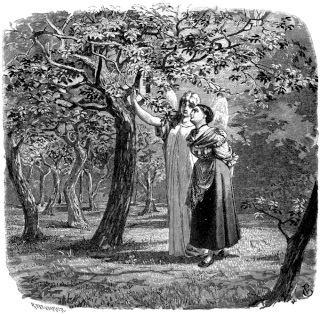
"The Girl Without Hands" or "The helpless Maiden" or "The Armless Maiden" is a German fairy tale collected by the Brothers Grimm. It is tale number 31 and was first published in the 1812 edition of Children's and Household Tales. The story was revised by the Grimm brothers over the years, and the final version was published in the 7th edition of Children's and Household Tales in 1857. It is Aarne-Thompson type 706.
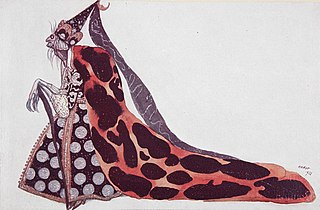
The WickedFairy is the antagonist of Sleeping Beauty. In some adaptations she is known as Carabosse, and she is named Maleficent in Walt Disney media.
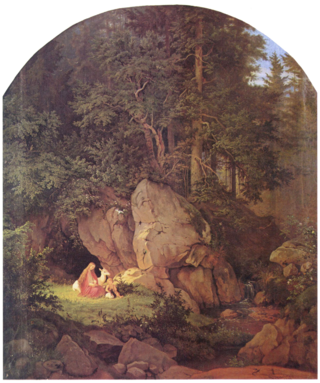
In folklore and fantasy, an enchanted forest is a forest under, or containing, enchantments. Such forests are described in the oldest folklore from regions where forests are common, and occur throughout the centuries to modern works of fantasy. They represent places unknown to the characters, and situations of liminality and transformation. The forest can feature as a place of threatening danger, or one of refuge, or a chance at adventure.

"Puss in Boots" is an Italian fairy tale, later spread throughout the rest of Europe, about an anthropomorphic cat who uses trickery and deceit to gain power, wealth, and the hand of a princess in marriage for his penniless and low-born master.
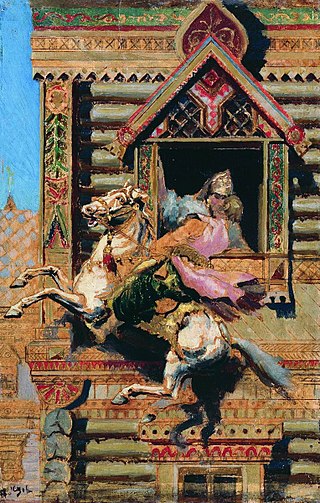
Sivko-Burko is a Russian fairy tale (skazka) collected by folklorist Alexandr Afanasyev in his three-volume compilation Russian Fairy Tales.
